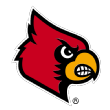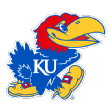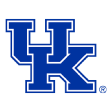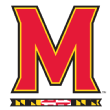After just two weeks of college basketball, we can't make grand assessments of what we've witnessed thus far. It's too early. Well, it might not be too early to pick Kentucky apart after its upset loss to Evansville last week. But overall, we need more film.
We're still allowed to highlight flaws that some of the best teams in the country have already displayed, however. It's not wise to call them "weaknesses" yet because the sample size is too small. The word "concern," however, feels appropriate for the top 10 teams in Jeff Borzello's Power Rankings.

1. Michigan State Spartans
Concern: Xavier Tillman's struggles around the rim
Key moment that highlights concern: With 17:50 to play in the second half of his team's 76-73 win over Seton Hall on Thursday, Tillman missed a short uncontested jumper after rolling to the rim off a pass from Cassius Winston.
Tom Izzo coaches one of the most complete rosters in America, even without injured guard Joshua Langford. Michigan State's road win over Seton Hall highlighted this group's resilience and potential. The Spartans overcame a phenomenal effort by Myles Powell (37 points). Their promise certainly outweighs any concerns about their program.
But Tillman, last year's Big Ten Sixth Man of the Year, finished 1-for-7 inside the arc, where he's made fewer than 45% of his attempts and committed seven turnovers through three games. During the 2018-19 campaign, the 6-foot-8 forward made 65% of those shots. He's a good player and a key element of the most efficient offense in America. And he's capable of more. He has to get those easy shots around the rim (he's 2-for-5 on post-ups, per Synergy Sports data) to fall.

2. Duke Blue Devils
Concern: Identifying a spark off the bench
Key moment that highlights concern: In Duke's 74-63 win over Georgia State on Friday, the Blue Devils couldn't rely on significant production from their bench. They didn't get their first bucket from a reserve until Joey Baker's jump shot with 3:23 to play in the first half.
Tre Jones manufactured an epic effort (31 points, six assists, four steals) against Georgia State. Duke overcame its slow start and finished with a double-digit win. But a lack of offensive options on the Duke bench is an ongoing concern for a squad that's connected on 30.4% of its 3-point attempts through four games.
Baker had one of his best performances against GSU, collecting eight of his team's 12 bench points. But Duke's reserves have made just 34% of their field goal attempts to date. With Jones (17.0 PPG, 5.8 APG), the Blue Devils boast one of the top point guards in the country. He's now an initiator on offense rather than the facilitator he was a year ago with Zion Williamson, RJ Barrett and Cam Reddish next to him. He's also carrying a heavier load, proven by the 40 minutes he logged against Georgia State. Getting a boost off the bench could help this team as it faces more elite opponents in the future.

3. Louisville Cardinals
Concern: Guarding versatile big men
Key moment that highlights concern: In the first half of Louisville's 87-58 win over North Carolina Central on Sunday, Justin Whatley, NCCU's 6-8 big man, stepped back and made a 3-pointer. Overall, he finished 3-for-6 from beyond the arc.
Louisville is good everywhere. The Cardinals don't have a signature win, but they've started the 2019-20 season as one of America's most efficient teams. All of the preseason hype about Louisville under Chris Mack has been justified by a string of next-level performances from a team with the weapons to overwhelm most of its opponents.
No team has made more than 45% of its shots inside the arc against Louisville this season. Jordan Nwora (20.5 PPG) is one of America's top players. But Whatley's success from the 3-point line bothered Mack, who said his team has to do a better job on pick-and-pop big men in the future. Versatile forwards and centers gave Louisville some challenges last year, too. But those players had names like Zion Williamson and Grant Williams, eventual first-round picks in the 2019 NBA draft. Still, Louisville is a balanced threat and a serious contender to win the ACC title. Making strides on defense will only make this a more daunting group in the coming weeks.

4. Oregon Ducks
Concern: Limiting second-chance opportunities
Key moment that highlights concern: With less than five minutes to play in Oregon's 82-74 win over Memphis last week, the Tigers' James Wiseman fell to the floor while wrestling for a loose ball, stood up, grabbed an offensive rebound and finished with a two-handed dunk.
Dana Altman has managed to pull together a powerful, athletic roster that's stacked with transfers, young players and returning vets such as Payton Pritchard. Oregon's win over Memphis last week stamped its status as a team with second-weekend potential. The Ducks had a roster packed with versatility when they made a run to the Final Four in 2017 too. That team, however, also missed a chance to advance, in part, because it couldn't secure key rebounds in the final seconds against North Carolina in the national semifinals. A similar trend is developing on this squad.
Last week, Memphis secured 42% of its missed shots, even with Wiseman logging just five minutes in the first half due to foul trouble. Fine. That's a good, talented Memphis team. But UT Arlington collected 13 rebounds (27% offensive rebounding rate) off misses in Sunday's 20-point loss to Oregon. Oregon's first three opponents (Fresno State, Boise State and Memphis) also combined to average a 50.5% clip from inside the arc. That's an early trend that could cause some problems for the Ducks this season.

5. North Carolina Tar Heels
Concern: Free throw shooting
Key moment that highlights concern: After splitting a pair of defenders in transition, Cole Anthony drew a foul on Christian Turner with 12:50 remaining in the first half of North Carolina's 77-61 win over Gardner-Webb on Friday. He missed the first of two free throws.
Anthony is one of the most polished freshmen Roy Williams has coached during his time at North Carolina. After three games, he's averaging 27.3 PPG, 7.3 RPG, 3.3 APG and 2.3 SPG, while making 45% of his 3-point attempts. But he's also a 68% free throw shooter, perhaps the only challenge that warrants a "concern" label for both him and his teammates. It's too early to be alarmed. But it's worth noting.
Williams coached his worst UNC free-throw-shooting team in the 2013-14 season. That squad made just 62.6% of its attempts from the charity stripe. Those Tar Heels were 48-for-86 through three games (they suffered a home loss to Belmont in their third game of the season). This current group is 45-for-72 (62.5%) from the free throw line at the same juncture. North Carolina could make a run to Atlanta. That's why its success from the free throw line in the coming weeks is worth monitoring. In ACC play, accuracy from the free throw line could be a factor in the race.

6. Kansas Jayhawks
Concern: Lack of ball handlers
Key moment that highlights concern: With 16:30 remaining in the first half of a 74-62 win over UNC Greensboro, David McCormack caught a pass from Marcus Garrett and put the ball on the floor as a pair of defenders tried to stop him. McCormack committed a traveling violation as he attempted to weave through them on an awkward, off-balance shot attempt.
After committing 28 turnovers in a two-point loss to Duke in the Champions Classic, Kansas committed just 17 turnovers combined in its next two games. But the Jayhawks also didn't face elite opponents in the subsequent games (wins over UNC Greensboro and Monmouth). Their loss to Duke highlighted their dependence on Devon Dotson as a primary ball handler.
Per hooplens.com, any time Bill Self has used two of these three players -- Udoka Azubuike, Silvio De Sousa and McCormack -- together, the Jayhawks have collectively committed turnovers on at least 20% of their possessions. Kansas is a talented team and the front-runner to win the Big 12 title. The Jayhawks' challenges with turnovers could haunt them throughout the season, though.

7. Gonzaga Bulldogs
Concern: Navigating future matchups against more athletic teams
Key moment that highlights concern: With 13:39 remaining in the first half of Gonzaga's 79-49 win over Texas A&M on Friday, Corey Kispert raced down the floor in transition before stumbling and committing an offensive foul at the rim as three defenders surrounded him.
Last season, Gonzaga never faced a deficit of athleticism in any matchup, because the Bulldogs had Brandon Clarke and Rui Hachimura, a pair of first-round picks in the 2019 NBA draft. This season, Mark Few, per the norm, possesses an efficient crew that's made 42.3% of its 3-pointers and 63.2% of its shots inside the arc. The Bulldogs are still awaiting the return of Killian Tillie, who missed the start of the season following knee surgery. But they are a good team. Still, they struggled in spurts against Texas A&M, the first top-200 team on KenPom they've faced this season.
In the A&M win, Kispert finished 1-for-10, Admon Gilder finished 1-for-4 inside the arc and Filip Petrusev got blocked at the rim in the first half. In December, the Bulldogs will face Washington, Arizona and North Carolina in a three-game stretch against teams with five-star athletes. We'll know more about Gonzaga's ability to handle elite athleticism in those matchups.

8. Ohio State Buckeyes
Concern:: C.J. Walker becoming a consistent, steadying force
Key moment that highlights concern: On the final possession in the first half of his team's 76-51 win over Villanova, Walker dribbled off a screen, tripped and nearly fell, tossed up a rushed shot and got blocked.
By landing Walker, Chris Holtmann picked up one of the best players on last year's transfer market. Walker averaged 8.3 PPG and 4.0 APG as a member of a Florida State squad that reached the Elite Eight during the 2017-18 season. Against Villanova last week, he finished with 10 points, seven assists and one turnover in a win. Walker, when he plays that way, is an asset. But he's also had moments throughout his career where he's wrestled with maintaining consistent on-court discipline.
In 2017-18, Florida State produced 116 points per 100 possessions when Walker wasn't on the floor, compared to 105 points per 100 possessions with him on the court. Ohio State has made 48.6% of its 3-point attempts with Walker, who has done far more to help the Buckeyes than hurt them, on the court. But his early 22.5% turnover rate rivals his tally from his final year at FSU, when he committed turnovers on 21.9% of his possessions. He's a talented player. He's one of the most important players on the roster. He's a significant addition. And if he makes smart decisions, Ohio State's chances of winning the Big Ten and thriving in March will increase.

9. Kentucky Wildcats
Concern: Consistency of young playmakers
Key moment that highlights concern: During one of Kentucky's first possessions in its 67-64 home loss to Evansville on Tuesday, the team's half-court offense delivered an Ashton Hagans step-back 3-pointer that clanked off the back of the rim and an errant Immanuel Quickley putback attempt.
It's always a bad idea to write any doomsday theories about a John Calipari team that's struggling in November. Just check the tape on the 2013-14 Final Four team if you want to see some supporting evidence. But the Wildcats lost to an Evansville team that made just 38.3% of its shots from the field. Kentucky made just 37% of its field goal attempts in the loss. It's a young team that has lacked the toughness some of Calipari's best teams enjoyed.
We also saw a talented team at its worst in the loss to Evansville. The Wildcats can dominate most opponents with their size and ability to attack the rim. But when stuck in half-court sets and desperate for a playmaking star to help them shake a funk, they could struggle this season. Per Synergy Sports, Kentucky has averaged .78 points per possession ("below average") in its half-court sets. Calipari's teams often get better. It might take some time to see the growth from this year's group, though.

10. Maryland Terrapins
Concern: Challenges from the 3-point line
Key moment that highlights concern: With less than six minutes to play in the first half of his team's 80-50 win over Oakland on Saturday, Anthony Cowan came off a screen and launched a 3-pointer from NBA range. The nearest Oakland defender was three or four feet in front of him. The shot clanked off the front of the rim.
Maryland's 62.4 percentage inside the arc is a top-10 mark through the first two weeks of the season. Jalen Smith, Eric Ayala, Aaron Wiggins and Darryl Morsell have all made at least 60% of their attempts inside the arc. But the Terps are also shooting just 26.4% from the 3-point line. For a team that exited the second round of the NCAA tournament following a 9-for-28 effort from beyond the arc in a loss to LSU, it's a concern.
There is hope, though. Maryland ended last year's Big Ten season as the league's No. 2 team in 3-point shooting. And we also watched Duke reach the Elite Eight with a team that never found a rhythm from the perimeter during the 2018-19 season. Still, Maryland's cold streak from deep could hurt the Terps as matchups against Notre Dame, Illinois and Seton Hall approach.
